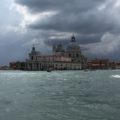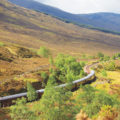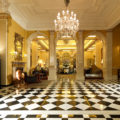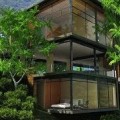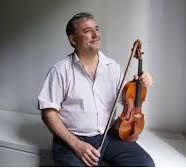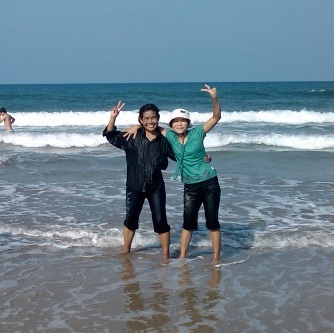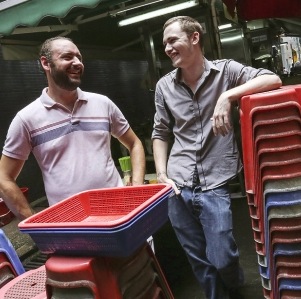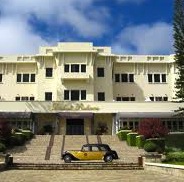
Retreat to Dalat
— November 1, 2014Breathe in the fresh mountain air and feast your eyes on the fascinating scenery of Dalat – this ‘City of Eternal Spring’ is a remarkable haven that calls for exploration

A twisty mountain road, the smell of fresh pine trees and a chill in the air – you could easily be forgiven for thinking you were making your way up an alpine pass. And then a couple of motorcycles cut past at reckless speed – two to a bike and no helmets – and you’re reminded you’re in Vietnam.
Dalat, in the southern part of the Central Highlands, is known as the ‘City of Eternal Spring’ because year-round the lowest temperature is 15 degrees and the highest is 24. The French were the first to discover the delights of Dalat – not just a welcome respite from the heat in the rest of the country, but the beauty of this mountain retreat. By the 1920s they had built broad boulevards, charming villas and Swiss-style chalets and this European sensibility remains today.
At the heart of this mountain sanctuary, the French built a hotel, the Hotel du Lang Bian, which was opened in 1922. Slightly elevated and looking out over a large lake with landscaped gardens, it was the largest building in the area and the city grew up around it. A parcel of land was wisely kept aside to build a golf course. Today, the hotel – now known as the Dalat Palace Luxury Hotel & Golf Club – is a five-star property and the best place to stay in town.
It is a boutique hotel in the truest sense. There are just 43 rooms and suites, designed in Edwardian and Art Deco style. While the rooms are well appointed with high ceilings, claw-footed bathtubs and generous shuttered windows looking out onto the lake, the real joy of staying at this hotel is taking the sweeping wooden staircase down into the majestic lobby and through to the grand dining room. The wooden floor is well polished, the walls are decked with huge oil paintings in gilt frames and the high-backed red upholstered chairs are elegant against the white starched tablecloths. For a moment you get a glimpse of the good life in 1920s and 30s Dalat. The hotel was grand enough to draw the high society up from Saigon. Step out from the dining room onto the broad terrace and you can see the lake in front and off to the side of the city, a 10-minute walk away.
You could quite easily while away the weekend in the hotel. The L’Aquitaine Spa in the eaves of the hotel has a den-like feel with dark wood panelling and thick red carpets, offering a full range of relaxing as well as results-orientated treatments. And then there’s the gym, the tennis court and the snug Rose Library. But as hard as it is to leave, Dalat is absolutely worth getting out and exploring.
Tourism has long been the mainstay of Dalat, but what’s on offer and the type of tourist attracted have been gradually evolving. Consider that, in the 1950s, Dalat was a famous hunting ground, and visitors would come to shoot wild boar, deer, roe and even panthers and tigers. Sadly, the holiday hunters were so successful that much of that game is now extinct.
Today, the big draw of Dalat is the fresh mountain air and breathtaking scenery, making it an ideal place for outdoor activities, such as golf and hiking and for the more adventurous, whitewater rafting, kayaking and paragliding. And while Dalat has long been popular with the Vietnamese – and a favourite spot for honeymooners – of the Western tourist market, it largely targeted the backpacker sector. Certainly, there were a few luxury hotels out to please a more high-end tourist, but it’s only recently that a determined effort is being made to rebrand the city, rethink what’s on offer and attract the upmarket travel sector.
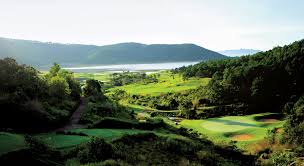 One obvious marker of this is The Dalat at 1200 Country Club and Private Estate. This is still a work in progress, an ambitious project that when completed will certainly put Dalat on the map not only in golfing circles but also in luxury travel. The ‘1200’ in the name refers to the height above sea level and the 2,100-acre estate occupies one of the finest slices of Dalat. Bordered by three pine-forested valleys and overlooking a large estate, it has its own microclimate.
One obvious marker of this is The Dalat at 1200 Country Club and Private Estate. This is still a work in progress, an ambitious project that when completed will certainly put Dalat on the map not only in golfing circles but also in luxury travel. The ‘1200’ in the name refers to the height above sea level and the 2,100-acre estate occupies one of the finest slices of Dalat. Bordered by three pine-forested valleys and overlooking a large estate, it has its own microclimate.
The project is conceived as an 18-hole Stadium Championship Course and the estate is the first in Asia to become an accredited Asian Tour Destination. When it is complete – so far eight of the 18 holes have been created – it will attract both amateur and professional players. But you don’t have to be a golfer to appreciate the natural beauty of this lush valley. The developers are carefully crafting the course to work around what is already there. The best example of which is a rice paddy that has been allowed to remain; presumably during harvest season the farmer will have to keep an eye out for stray golf balls.
And if hiking is your thing, you have come to the right place. Not only is the temperature ideal, but there are plenty of forest trails, many of which you can easily navigate with a map from the hotel. About 12 km north of the city, Lan Bian Mountain has five peaks and depending on which trek you take, you can go past waterfalls, lakes, volcanic peaks and caves.
To enjoy the great outdoors with minimum effort, there’s a cable car. The 2.5-km ride takes you up over the tops of the pine trees and offers stunning views of the rice paddies and rivers and all the way down to the sea. And at the top you can get out and explore the Truc Lam Zen Monastery. The 20-year-old temple was built to support the Truc Lam Yen Tu Zen sect, a Vietnamese form of Zen. It’s a working temple, so you can get a sense of daily life for the monks. It can get busy on weekends and on public holidays, so try and avoid the peak times to get a real sense of the temple’s tranquillity up in the mountains. And if you don’t have a head for heights, you can always opt for a taxi or motorbike to whizz you up to the monastery.
If you’re looking for souvenirs at the end of your weekend escape, without doubt your best bet is a trip to the market. Dalat’s temperate climate means the market is stocked with fruits and vegetables usually associated with the West – think strawberries, loganberries, artichokes and incredibly large avocados. The market is open in the evening, too – and not just for tourists, this is a local thing. Only at night it is a whole different story, clothes as well as food is sold here and there are plenty of places to stop, get a drink or a snack and take in the street life.
The French were absolutely right when they decided to make Dalat a hill station retreat and the sound reasons for that decision remain true today: fantastic climate, beautiful scenery and warm and friendly people. If there ever was a time to go to Dalat, it’s now. It may have the buzz of motorbikes that you find on the streets in Saigon, but there’s still an innocence to the city reminiscent of Hanoi 20 years ago.
[PDF url=https://www.hongkongkate.com/wp-content/uploads/2014/11/240-AsiaSpa-Dalat.pdf]
